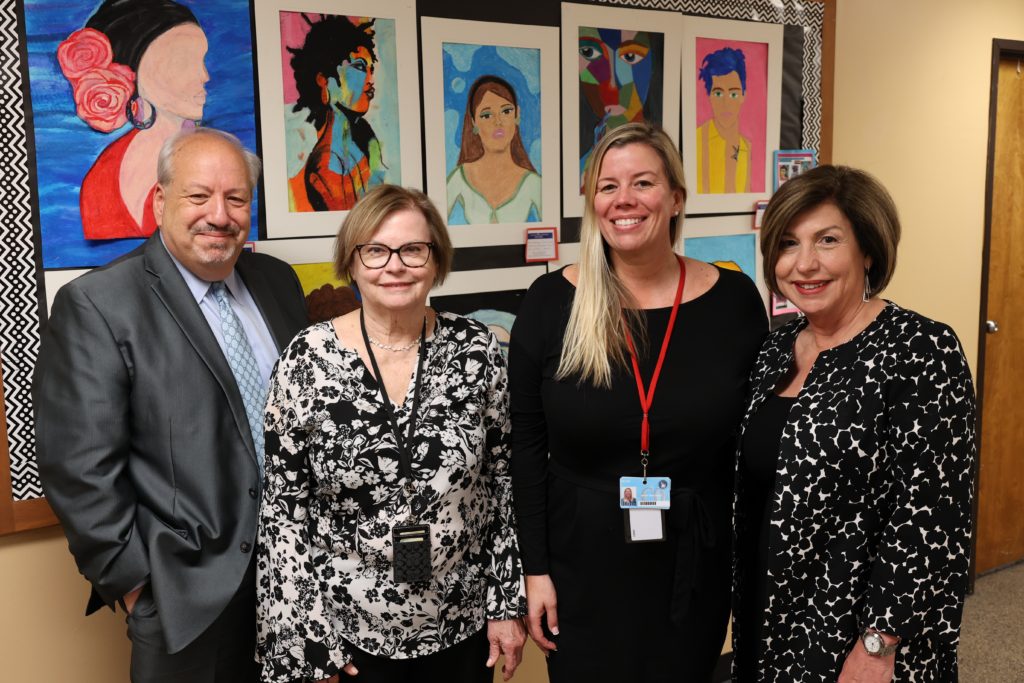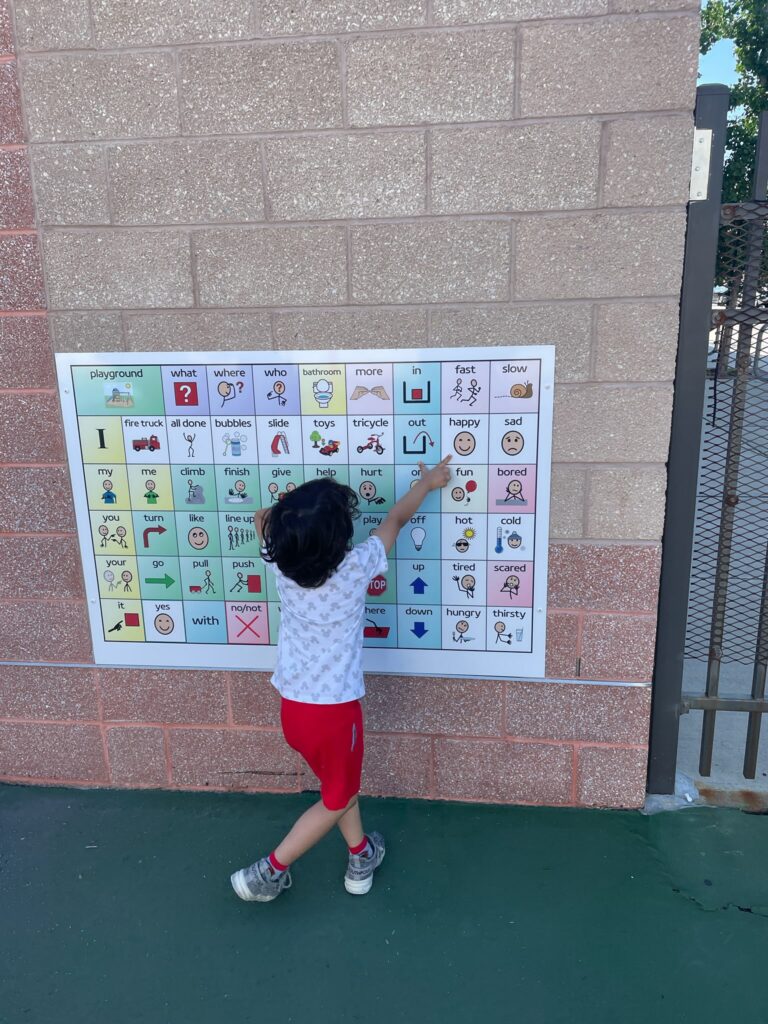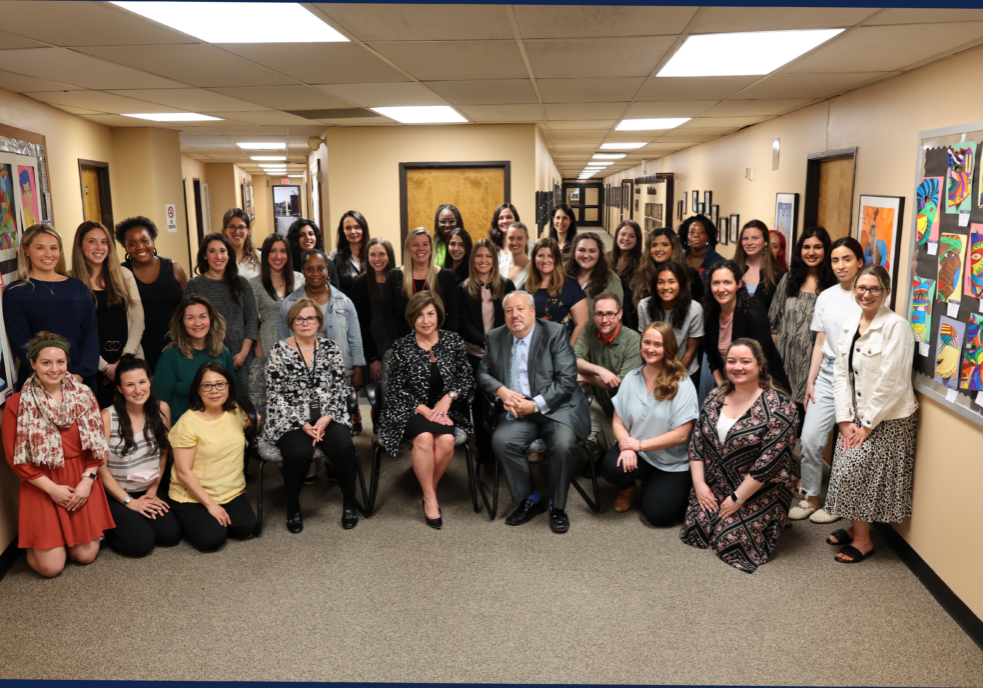Keeping speech and language services alive during the COVID-19 pandemic
by Tiffany Smolansky and Kathleen De Gregorio
The Jersey City Public Schools speech-language pathologists (SLPs) were faced with a dilemma as the COVID-19 pandemic swept the nation. On March 13, 2020, the Jersey City school buildings closed for what was first thought to be a brief period. School supplies, books, and therapy materials were left behind. The pandemic forced school districts to reevaluate student learning almost overnight. The SLPs were challenged to carry out therapy services via a remote platform—a completely uncharted territory.
The challenge
While districts scrambled to get remote learning platforms in place, it became apparent that communication with teachers, parents and students was going to be the key to the success of any effective distance learning initiatives. Related service providers were also going to be challenged to explore new and innovative ways to address the specific needs of students in a remote learning environment.
SLPs collaborated with each other and accepted this challenge. They networked to determine ways to enhance speech and language learning at home, supplement services that students were receiving remotely, provide therapists with resources to share with their colleagues and give parents access to additional resources that they could use for their children.
Since Jersey City Public Schools had over 1,600 students receiving speech and language services, including 144 special classes for students with autism spectrum disorder districtwide, this would be an enormous challenge. How would the speech pathologists be able to meet student needs remotely?
The solution: A website is born
The SLPs knew something had to be done, so they sprang into action. Since communication is their specialty, a team of SLPs collaborated to generate new ideas and potential solutions for ways to reach all the students who needed speech and language therapy services. This sparked a unique, and ultimately award-winning idea.
Two SLPs and NJEA members Tiffany Smolansky, MS, CCC-SLP and Colleen Kenny, MS, CCC-SLP, created the district’s very first speech and language website, jcboespeech.com. The SLPs received unwavering support from Dr. Gerry Crisonino, assistant superintendent of Special Education, and Danielle Gitlin, their Special Education supervisor, at the time.
The website was up and running on March 29, 2020, just 15 days after the announced school closings. In addition to the district sending home packets of speech and language activities and therapists providing teleservices, the parents, teachers and therapists now had another effective and creative resource at their disposal to assist their children during this pandemic. The JCBOE speech website is designed to address and provide lessons and resources for all areas of speech and language in the public schools.
Since its launch, the website has been utilized by many families and educators across the district. In addition, educators and related service providers across the country have visited the site and expressed appreciation for the information provided. The Jersey City speech website was submitted to the New Jersey School Board Leader Exemplary Programs during COVID, in 2020 by Kathleen De Gregorio, a speech consultant to the district. It was declared a winner and we are proud to say that we now have an award-winning platform for our therapists, teachers, parents and the community to access.

Teamwork is dreamwork!
To maintain the most up-to-date and research-based speech and language content, over 30 Jersey City SLPs continuously contribute original materials, including YouTube videos, live lessons, and interactive activities for the students. Summer activities are also provided for students to maintain their communication skills when school is not in session.
All resources and materials found on the website, including original content and submissions, are intended for use by the public and updated on a weekly basis by Smolansky and Kenny. We hope that all NJEA members will access the website and provide feedback to us, so we can continue to evolve.

SLPs and their contributions
A website was one way to connect students with educators during the pandemic. But the return to in-person instruction presented its own challenges. Students needed to learn how to reconnect. Three Jersey City Education Association members, Maggie Cecchini, Linda Miller, and Alex Nikodem, share how they helped students reconnect and communicate from a speech-language perspective.
Communication boards for Jersey City Public Schools
Contributed by JCEA member Maggie Cecchini, M.A., CCC-SLP
As I was browsing online, I found a fellow New Jersey speech therapist, Molly Cervini from Eat Play Learn LLC, who unveiled a communication board in her local park.
A communication board is a sheet of symbols, pictures or photos that a child will learn to point to, to communicate with those around them. This sparked my interest. It was a wonderful idea to support inclusivity for nonspeaking children within their local community.
When I presented the idea of obtaining a community communication board for our district, the administration whole-heartedly supported my vision. We are extremely grateful that Subaru’s “Share the Love“ was able to fund seven communication boards for the Jersey City Public Schools. Each board will be placed near cafeterias or in outdoor courtyards at schools that have a high population of students on the autism spectrum.
The boards will enable nonspeaking students to have access to language support during lunch and recess. Not only will the boards benefit the students with functional communication skills, but they will also promote interdisciplinary collaboration for speech-language pathologists and teachers.
Bridging the Gap: The Auditorily Impaired Program
Contributed by JCEA member Linda Miller, M.A., SLS
I work at P.S. #27 in Jersey City and while I provide service to all students, my focus is with Deaf and Hard of Hearing students. In 2013, I was a part of the first class to graduate from the interpreter training program at Passaic County Community College. Before coming to Jersey City, I used my interpretation skills as a job coach for Deaf adults at Goodwill Industries in Harrison.
I am also a part of a Newark-based organization called Deaf Advocacy Group. We are currently training police officers and other first responders on how to communicate with Deaf and Hard of Hearing individuals of all ages. We are also working with various state lawmakers to make improvements to laws that will improve the lives of the Deaf and Hard of Hearing.
A vital program for the Deaf and Hard of Hearing in Jersey City Public Schools generally, and P.S. #27 in particular, has yielded many great opportunities, including:
- Workshops teaching basic sign language to the Speech Department.
- Weekly basic sign language training to building staff at PS #27.
- In 2018, I brought in a speaker for Black History Month to discuss being Black and Deaf to our middle school students.
- In 2019, I started teaching basic sign language to hearing students after school.
- In 2019, we had our first-ever “bridging the gap” social event for our Deaf and hearing students from the after-school program. The following year, we invited members of the community. And in 2022 the event included special guests: Deaf Advocacy Group of NJ founder Thyson Halley, JCEA Executive Member Colleen Kelleher and NJEA President Sean M. Spiller.
- In 2021-22 the Sign Club resumed.
I truly enjoy working with my students and their families. I enjoy helping our staff communicate better
The MTG Club at Academy 1 Middle School: An Opportunity to Reconnect after Remote Learning
Contributed by Alex Nikodem, M.S., CCC-SLP
It is 2:55 p.m. at Academy 1 Middle School in Jersey City. Two students sit across from each other in the life-skills room, shuffling their sleeved cards. To unsuspecting observers, they might think that they were witnessing an over-glorified version of solitaire. But to the wise and knowing, these two individuals were in fact caught in an epic struggle for resources and power.
This was not the Hunger Games, but instead, Magic the Gathering, the very first trading card game. Magic the Gathering was created in 1993 by mathematician Richard Garfield. Unlike many games of its time, it has lasted decades and has become a part of pop culture and
The two players were both members the Academy 1 MTG, and after-school club. One student was utilizing an aggressive strategy that tried to win quickly at all costs, while the other student was waiting patiently for an opening to play their counter spells. The students wore smiles on their faces and appeared like they were having the time of their lives.
At its heart, Magic the Gathering is a social game. Two players each bring a deck of at least 60 cards. The players greet one another, extend handshakes, and what follows is not so much a card game as it is a conversation. Both players need to communicate what they are doing for the game to proceed. Players each signal when their turn is over and acknowledge each other’s actions. There is surprise, disagreement, feats of power, shows of mercy, and above all, mutual respect.
I first played Magic the Gathering in college, and I quickly became enamored with the design, mechanics and lore involved in the game. It takes the very best features from chess and Dungeons and Dragons and molds them into an addictive and satisfying trading card game. I knew that I wanted to share this game with the next generation of young players. I saw a need that was going unfulfilled and realized how much good this game could do for young minds that were being over-saturated with technology. Coming out of the pandemic, having been trapped in their rooms, staring maniacally at their computer screens, many students had unknowingly suffered from social skill atrophy.
Being a speech and language pathologist who was both passionate and concerned, I knew that students needed a chance to exercise their social and linguistic muscles. I opened the club and almost immediately about 14 students joined. It was trying at times because besides having to learn the complex rules involved in the game, students had to recall what it was like to once again be a part of a gathering as the name of the card game proudly proclaims. The guiding principle of the club is to promote social-emotional learning, good etiquette, and a sense of belonging and community.
Fast forward to June 2022. Students who were once timid and sitting by themselves at sparsely spaced tables counting their fingernails, were now confident and bold “planeswalkers” (among the most powerful beings in the multiverse) seated together, spell-slinging and just having a fantastic time. I saw students who never smiled or cracked a joke find a place where they could be both silly and serious.
A core premise of the world of Magic the Gathering is to find your spark—that unique enigmatic quality that defines a person. In that dusty, poorly lit classroom, wrapped in a world of fantasy and fellowship, I get the impression that students had found their sparks.
